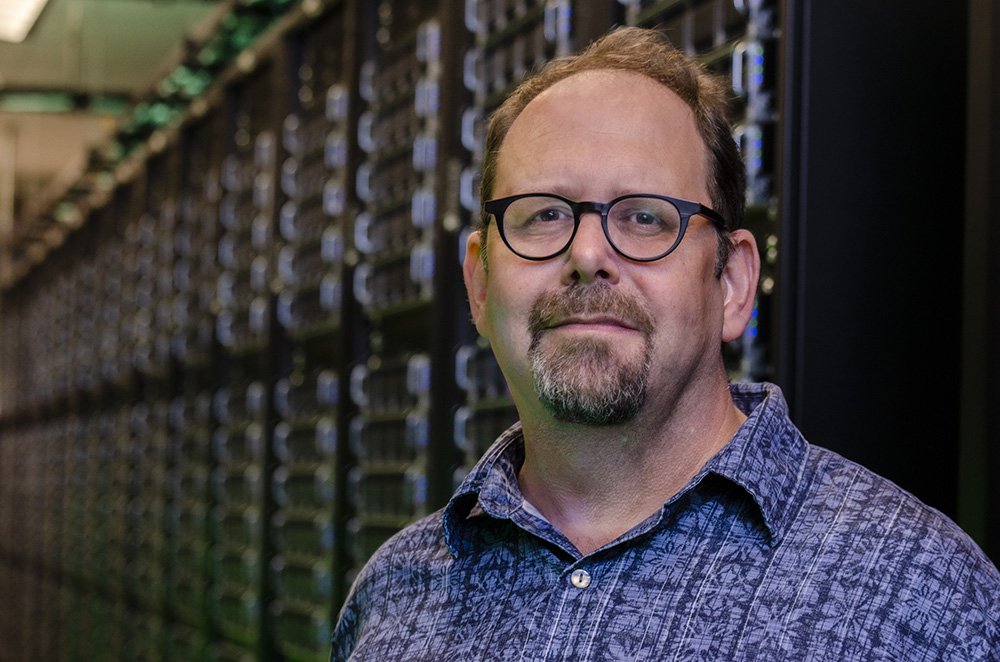People & Programs
Niall Gaffney
Dr. Neuralnet
Or: How I Learned to Stop Worrying and Love AI

Depending on your perspective, artificial intelligence, or AI, may conjure images of sentient machines or of marketing stunts that can beat humans at games from Jeopardy to StarCraft. But what really is AI, what can we do with it, and can it extend the capabilities of our society in the same ways fire, agriculture, and industrialization have?
In the past, intelligence and wisdom were gained and integrated through experience. One learned that green was a color and that plants were green but so were some apples. That wisdom was combined into the intelligence to tell the difference between a plant and an apple through recognition. For many observational researchers (astronomers. biologists, and geologists), methods like linear regression and clustering made it possible to analyze what was then large amounts of data and gain a better understanding of the way the world and Universe work.
In the past decade, two major changes have occurred. First, the amount of data available to scientists has grown exponentially, leading to a major hurdle in doing data explorations by hand. Second, fields which had not been traditionally data-driven (humanities, social sciences) found themselves in need of ways to convert their data into discoveries and extrapolate that into prediction.
For many years, researchers took data and inferred results by looking for trends. However, the current volume and variety of data can now best be explored algorithmically through AI techniques. These techniques can handle more data faster, but share their roots with classic “plot the data and look for trends or clusters” methods humans have used for over a century. While many call this the era of ‘Big Data,’ I like to think of it as the shift from biological data exploration to the era of digital data discovery.
AI algorithms endow computers with the power of recognition and, by extension, prediction. In the past, this was called regression, or the ability to fit functions to data, and allowed us to create models of data based on such functional fitting. In modern AI, this has been extended so computers can create networks of functions to fit data and, based on how well each one fits, recognize and predict outcomes.
These networks need to be trained — much like our own brains were trained — by being told ‘zebras have stripes’ and ‘horses have tails.’ Each of these bits of algorithmic recognition are referred to as neurons in the network. However, we don’t need to develop specific ‘stripes vs. tails’ algorithms. With copious data and training, the network learns which neurons react to data labeled zebra or horse and can detect the differences.
Other algorithms use simple models combined with massive datasets to infer meaning. An example is the Word2Vec models which use a large dataset of text (such as all of Wikipedia) to find which words are most closely positioned in a sentence to other words. By creating these simple associations that can be expressed mathematically, an AI system can subtract the word ‘he‘ from ‘king’ and add in the word ‘she’ and find the word that it’s closest to mathematically is ‘queen.’
While these may seem to be simple concepts, researchers are using these applications in ways that impact our everyday lives. We can now interact with smart personal assistants via voice command and receive direct answers to our questions. Cities can use AI models to monitor traffic and pedestrian flows in real time, alerting managers to specific intersections that need monitoring. Cars can detect when you are drifting out of your lane and warn you early enough to prevent accidents.
This is our future and there are many other ways AI will touch our lives. Training weather models with historical data will improve forecasting. Developing AI systems that can find linkages in decades of published research journals will produce improvements in medicine and materials science. Even in astronomy, AI is improving our understanding of the most energetic events in the Universe by identifying signals of gravitational waves and neutrinos within 60 seconds and activating follow-up observations.
These are the fruits of AI that will lead to a bright future — one where computers and people play to their strengths, allowing us to better understand and predict the world around us.

